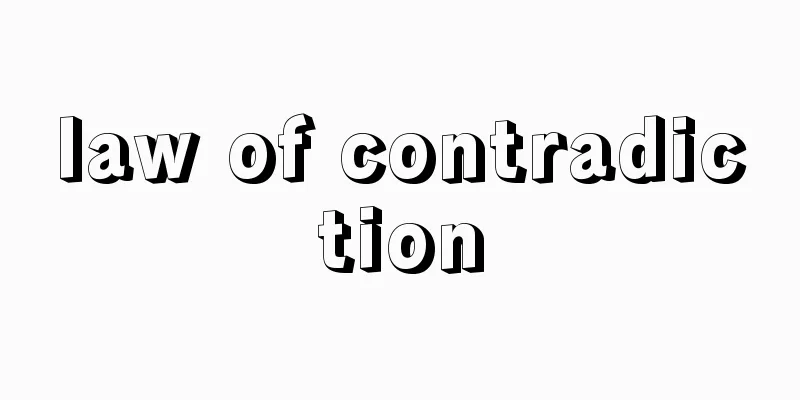Administrative organization - gyouseisoshiki (English spelling) administrative organization

|
From a legal perspective, it is defined as the entire system of administrative agencies and their internal departments that are responsible for the administration of a country or public organization. However, from the perspective of public administration or organizational theory, it is a public organization that draws its resources from the political body and performs administrative functions mediated by the institutions of the state, and an organization can be defined as a cooperative activity system of multiple people that aims to achieve a specific goal by exchanging inputs and outputs in relation to its environment. In any case, on the one hand, administrative organizations are naturally political in nature because they are a component part of a governing organization, and on the other hand, they naturally have a technical nature because the nature of their functions is practical and constructive (their dual nature). [Taguchi Fukuji] Decision-making system for administrative organizationsIn Germany and France, organizational power within the executive branch is in principle left to the executive branch itself, and intervention by acts of parliament is constitutionally restricted. In the UK, there is no legal limit to intervention by acts of parliament, but decisions by the political executive in the form of Orders in Council carry substantial weight. In the US and Japan, a wide range of areas are directly regulated by acts of parliament, but in the US, while individual intervention by individual organizational acts or individual appropriation powers acts is strong, there is a lot of delegation of administrative legislation to the ministers of each ministry, and organizational changes are made through the President's administrative reorganization plan based on the temporary Administrative Reorganization Act, whereas in Japan, a fairly wide range of areas are uniformly made legal matters by the National Administrative Organization Act, and the organizational power of the executive branch is most severely restricted. In addition, issues surrounding the decision-making system for administrative organizations include the question of whether matters are matters of law or discretionary matters for the executive branch, as well as the question of what is a matter for government ordinance and what is left to administrative legislation at the ministerial ordinance level or below. However, in Japan, matters subject to government ordinance are characterized by being very detailed, and it has been pointed out that this has made possible the existence of a uniform system of management of administrative organizations by the Administrative Management Agency (later the Management and Coordination Agency, and since 2001 the Ministry of Internal Affairs and Communications), which is unlike any other country (Nishio Masaru). [Taguchi Fukuji] Principles for organizing administrative organizationsAs mentioned above, administrative organizations have a dual nature, that is, political and technical, so it is difficult to find organizational principles that are generally applicable to each country. One attempt at practically pursuing such organizational principles was the 1918 British "Government Organization Committee" (Haldane Committee), which presented two principles for allocating functions among ministries and departments: the principle of basing the allocation of functions on the people (customers) to be served, and the principle of basing the allocation on the type of service to be provided, and the adoption of the latter principle. Furthermore, the 1937 report of the U.S. President's Committee (Brownlow Committee) and its companion book, Essays on Administration by Gulick et al., proposed the following principles of departmental organization: (1) organization by purpose, (2) organization by method, (3) organization by object (based on (a) the people receiving services or being handled, or (b) the things being handled), and (4) organization by geography -- vertical departments are formed by (1) and (3)(a), while horizontal departments are formed by (2), (4) and (3)(b). They also presented POSDCORB (planning, organizing, personnel management, directing, coordinating, reporting, budgeting) as the responsibilities of the top manager. These principles are well known. However, the form of administrative organization is strongly determined by the form of governing organization in each country (for example, the form of mutual relationship between the legislature and the executive branch (federal or unitary state, parliamentary or presidential system), the way of combining political and bureaucratic appointments, etc.), so the above-mentioned organizational principle of division of labor is applied at most only to the internal structure of the ministry organization. However, the form of the secretariat department of the ministry organization (usually divided into business departments and secretariat departments) differs from country to country, and the hierarchical structure of the ministry, political integration unit, and administrative activity unit also vary. In the end, the reason why a certain organizational principle is applied throughout the organization of the central ministries and agencies of each country is that, as a standard for the division of labor between the central ministries and agencies, the purpose or performance (tasks) as Gulick et al. put it, takes a dominant position, and the method, target, and area take a secondary position. [Taguchi Fukuji] Types of administrative organizationsIn the early days, the administrative organization of modern nation states was relatively simple, with the ministry system at the core. However, with the full-scale development of the administrative state and state interventionism, not only did administrative organizations as a whole expand, but the types of administrative organizations also diversified. The current types of central administrative organizations in Japan are divided into (1) ministries and agencies (which include operational entities such as forestry and forestry as part of their structures), (2) administrative committees, and (3) advisory councils, as well as (4) a large number of "special corporations" - public corporations, public agencies, business corporations, public funds, financial institutions, special banks, and others. The types of administrative structures in the United States are: (1) departments, (2) executive offices, (3) independent agencies, (4) independent regulatory commissions, (5) public corporations, (6) (7) foundations, associations, and research institutes, (8) claims committees, (9) interagency committees, (10) statutory advisory bodies, (11) joint executive-legislative committees, (12) intergovernmental organizations, (13) intermediate bodies (such as the Federal Reserve Bank), and (14) private institutions funded and organized by the government to carry out contractual tasks. The types of central administrative structures in the United Kingdom are: (1) central ministries, (2) public corporations, (3) advisory bodies, and (4) quasi-judicial tribunals. In addition, the existence of "quasi-governmental organizations" (abbreviated as quagos) and "quasi-non-governmental organizations" (abbreviated as quangos), which are said to number as many as 600 in total, is attracting attention. The former are established as a means of hiving off the responsibilities of the central government or because they have financial capabilities more or less independent of the Ministry of Finance, while the latter are established primarily to transfer controversial or difficult issues from parliamentary control to ad hoc public institutions and to facilitate partial control or self-regulation of dominant institutions and elites. In any case, the proliferation of special corporations in Japan, the corresponding administrative types in the United States, quagos and quangos in the UK, and so on, on the one hand, causes the expansion of bureaucratic control over the economy and civil society and the difficulties of popular and parliamentary control, but on the other hand, causes inconsistency and contradictions in state intervention. [Taguchi Fukuji] Competition and conflict in administrative organizationsThe expansion and differentiation of administrative organizations, and the diversification and decentralization of the entities responsible for public functions that accompany the full-scale deployment of state interventionism, create competition and conflicts in administrative organizations that are characteristic of modern administration. These basically reflect the demands and conflicts of interest of the intervening environment (each administrative organization has a mutually penetrating or symbiotic relationship with its customers), but at the same time, they are often mediated by the "institutional philosophy" formed within each administrative organization. More specifically, they are caused by overlapping functions and policy conflicts. One device for mediating administrative competition and conflicts is the use of inter-ministerial committees, but ultimately the decision is left to the head of the political executive branch, that is, the cabinet or the president. However, there are many cases in which it is difficult for inter-ministerial committees to effectively mediate, and there are also many cases in which cabinet members become spokespeople for the administrative organizations or special interests they represent, and where the president's decisions are not necessarily accepted. [Taguchi Fukuji] Japanese Administrative OrganizationUnder the Constitution of the Empire of Japan, the discipline of administrative organizations was the inherent authority of the Emperor, and most administrative organizations, including civil servants, were established by Imperial decree as an exercise of the Emperor's prerogative to organize and appoint. In contrast, under the Constitution of Japan, the Emperor's prerogative to organize administrative organizations and the inherent organizational rights of the executive branch are not recognized. The basic legal principle of administrative organizations in a nation of popular sovereignty is the principle of administrative organization statutory, which aims to place administrative organizations under democratic control by the legislative assembly, and to regulate them by law or ordinances, thereby ensuring objective fairness and openness of administrative organizations. The Constitution of Japan only directly provides provisions for the Cabinet (Article 66 onwards), the Board of Audit (Article 90), local governments (Article 92 onwards), and civil servants (Article 73, item 4), but the National Government Organization Act and the Ministries and Agencies Establishment Acts based on it, the Local Autonomy Act, the National Public Service Act, the Local Public Service Act, and other laws provide very detailed regulations. [Toshiro Fuka] National Administrative OrganizationThe national administrative organization is made up of administrative organs with the Cabinet at the top. The Cabinet is the highest administrative organ of the country, consisting of the Prime Minister as its head and other Ministers of State, and is jointly responsible to the Diet for the exercise of administrative power. The National Administrative Organization Act provides basic matters for administrative organs under the jurisdiction of the Cabinet as a general law, while the establishment and abolition of more specific administrative organs such as ministries, ministries, committees, and agencies, as well as the scope of their responsibilities and authority, are determined by the respective establishment laws for these administrative organs. The national administrative organization must be systematically organized under the control of the Cabinet, with all administrative organs having clearly defined scopes of jurisdiction and power. Such national administrative organs are designated as ministries, agencies, commissions, and agencies. Ministries and agencies are established as organs to handle administrative affairs under the control of the Cabinet, and commissions and agencies are established as external bureaus within ministries or agencies. The heads of the Cabinet Office and each ministry are designated as the Prime Minister and each minister, respectively, and the heads of committees are chairpersons, and the heads of agencies are directors-general. The Prime Minister appoints each minister from among the Ministers of State, and there are some committees and agencies, such as the National Public Safety Commission and the Financial Services Agency, that are specifically designated by law to be headed by Ministers of State. Ministries, agencies, and commissions have secretariats, bureaus, departments, and other internal departments, and the establishment of these internal departments and the scope of their duties are determined by cabinet order, not by law (amended by Law No. 77 of 1983). In addition, prefectures, ministries, commissions and agencies may, within the scope of their responsibilities as prescribed by law, establish councils and other organs, facilities and organs such as testing and research institutes and educational training facilities, as well as special organs, and when it becomes necessary to divide up the affairs within their jurisdiction, they may establish local branch offices as prescribed by law. In addition, there is the Board of Audit, an administrative agency that has an independent status vis-a-vis the Cabinet, which is the country's highest administrative organ, and there is the National Personnel Authority, an administrative agency that is highly independent despite being under the jurisdiction of the Cabinet and is not subject to the National Government Organization Act. [Toshiro Fuka] Administrative Organization of Local GovernmentsThe outline of the administrative organization of local governments such as prefectures and cities, towns, and villages is stipulated in the Local Autonomy Law. The Local Autonomy Law calls the administrative organs of local governments executive organs, and stipulates that the organization of executive organs must be systematically organized under the jurisdiction of the head of the local government (the prefectural governor or the mayor of the city, town, or village), with each executive organ having a clearly defined scope of jurisdiction and authority. The executive organs stipulated in the Law include the head who governs and represents the local government, as well as committees (such as the board of education or the public safety commission) or commissioners (auditors), and may establish as auxiliary organs local government dispute mediation committees, review boards, deliberative councils, investigation committees, and other organs for mediation, review, deliberation, or investigation. In addition, the head may, by ordinance, establish branch offices, regional offices, or branch offices, or local offices as so-called local offices, in order to divide up the affairs that fall under his authority. In addition, the Local Autonomy Act contains necessary provisions regarding standard administrative departments for dividing up the affairs that fall under the mayor's authority, as well as auxiliary bodies to the mayor (vice governors or deputy mayors, accounting managers, etc.). [Toshiro Fuka] "Administrative Studies Lectures 4: Administration and Organization, edited by Kiyoaki Tsuji (1976, University of Tokyo Press)" ▽ "Organization and Administration, written by Tonosuke Imamura (1978, University of Tokyo Press)" ▽ "Modern Administrative Law Series 7: Administrative Organization, written by Ichiro Okawa, Hiroshi Shiono, and Itsuo Sonobe (1985, Yuhikaku)" ▽ "Prospects for Reform of Local Administrative Organizations, written by Toyoji Tanaka et al. (1989, Gakubunsha)" ▽ "Administrative Law Research 5: Issues in Administrative Organization Law, written by Hiroshi Shiono (1991, Yuhikaku)" ▽ "Complete Collection of Legal Studies 7-1: Administrative Organization Law, written by Isao Sato, new edition and expanded version (1994, Yuhikaku)" ▽ "Introduction to Modern Administrative Law 2: Administrative Organization Law and Major Administrative Areas, edited by Tsutomu Muroi, 4th edition (1995, Horitsu Bunkasha)" ▽ "Administrative Organization and Administrative Litigation" by Kobayashi Hiroshi (2000, Seibundo)" ▽ "Administrative Law 3: Administrative Organization Law" 2nd Edition by Shiono Hiroshi (2001, Yuhikaku)" ▽ "Administrative Organization Law" New Edition by Fujita Chuyasu (2001, Ryosho Fukyukai)" ▽ "Japan's Government System: The Process and Direction of Reform" by Imamura Tonosuke (2002, Seibundo) [Reference items] | | | | | | | | | | |Source: Shogakukan Encyclopedia Nipponica About Encyclopedia Nipponica Information | Legend |
|
法律学的には国または公共団体の行政を担当する行政機関ならびにその内部部局の全体系=系統と定義される。しかし行政学ないし組織理論の観点からすれば、それは、政治体からその諸資源を引き出し、国家の諸制度によって媒介されている行政機能を担う公共組織であり、組織とは、その環境との関係で入力・出力を交換しあう、特定の目標の実現を目ざす複数の人間の協力的活動体系として定義されよう。いずれにしろ行政組織は一方で統治組織の一構成部分であることから当然に政治的性質を帯び、他方でその機能の性質が実行的建設的であることから当然に技術的性質を帯びることになる(その二重的性質)。 [田口富久治] 行政組織の決定制度ドイツ、フランスでは、行政府内の組織権を原則として行政府自体にゆだね、議会制定法による介入を憲法的に制約している。イギリスでは議会制定法による介入に法的に限界はないが、枢密院令の形をとる政治的執行部による決定が実質的に重きをなしている。アメリカと日本では議会制定法によって直接的に規制されている領域が広いが、その際アメリカでは、個別組織法令ないし個別歳出権限法による個々的介入が強い反面、各省長官による行政立法への委任が多く、また時限的な行政機構再編成法に基づく大統領の行政機構再編成計画による組織改変がなされているのに対し、日本では国家行政組織法によって、一律的にかなり広い範囲が法律事項とされていて、行政府の組織権はもっとも厳しく制限されている。なお、行政組織の決定制度をめぐる論点としては、法律事項か行政府裁量事項かの論点に加えて、どこまでが政令事項で、どこから先が省令以下の行政立法にゆだねられているかの問題があるが、わが国では政令事項が細目に及んでいるという特徴があって、このことが諸国に類似するもののない行政管理庁(のちの総務庁、2001年より総務省)による画一的な行政組織の管理制度を存在可能にしている、と指摘されている(西尾 勝)。 [田口富久治] 行政組織の編成原則すでに述べたように行政組織には政治的および技術的という二重的性質があるため、各国のそれに一般的に妥当する編成原則をみいだすことは困難である。このような編成原則を実務的に追求した試みとしては、1918年イギリスの「政府機構委員会」(ホールデン委員会)の、部省間への職能の配分にあたっての、サービスされるべき人(顧客)によるという原則と、提供されるべきサービスの種類によるという原則、という2原則の提示と、後者の原則の採択がある。さらに1937年アメリカの「大統領委員会」(ブラウンロー委員会)の報告書、およびそれと表裏一体をなすギューリックらの『管理学論集』の提起した(1)目的別組織、(2)方法別組織、(3)対象別組織((a)サービスを受けまたは取り扱われる人を基準とするか(b)取り扱われる物を基準とする組織)、(4)地域別組織――(1)および(3)(a)によって垂直的部省が、(2)(4)および(3)(b)によって水平的部省がつくられる――という部省編成原則、および最高管理者の職責としてのPOSDCORB(計画・組織化・人事・指揮・調整・報告・予算)の提示は有名である。しかし行政組織のあり方は、それぞれの国における統治組織のあり方(たとえば、連邦国家か単一国家か、議院内閣制か大統領制かといった立法府と行政府の相互関係の形態、政治的任用と官僚制的任用の接合の仕方など)によって強く規定されているため、先にみたような分業論的編成原則が適用されるのは、せいぜい部省組織の内部構造に限られる。だがその部省組織――普通、事業的部門と官房的部門に分かれている――の、たとえば官房的部門のあり方も国によって異なっているし、部省の階層構造や政治的統合単位と行政的活動単位もさまざまである。結局、各国の中央部省の編成を通じて、ある種の組織編成原則が貫徹しているのは、中央部省間の分業基準として、ギューリックらのいう目的ないしパフォーマンス(業務)のそれが優越的地位を占め、方法、対象、地域によるそれは副次的地位を占めているということであろう。 [田口富久治] 行政組織の類型近代国家の行政組織は、その初期においては、基幹的それとしての部省制を中軸とする相対的に単純なものであった。しかし行政国家化・国家介入主義の全面的展開に伴って、行政組織が全体として膨大化するだけでなく、行政組織類型も多様化してきた。わが国の現行中央行政組織類型は、(1)省庁(その機構の一部として林野など現業的事業体を含む)、(2)行政委員会、(3)諮問機関としての審議会などに区別されるが、そのほかに(4)多数の「特殊法人」――公社、公団、事業団、公庫、金庫、特殊銀行その他――がある。アメリカ合衆国の連邦政府の行政類型としては、(1)省、(2)大統領府、(3)独立機関、(4)独立規制委員会、(5)公社、(6)(7)財団、協会および研究機関、(8)請求委員会、(9)省庁間委員会、(10)制定法上の諮問機関、(11)行政部・立法部合同委員会、(12)政府間機関、(13)中間的機関(連邦準備銀行など)、(14)契約上の業務を遂行するため政府によって出資・組織された私的制度、などがあげられている。イギリスの中央行政組織類型としては、(1)中央各省、(2)公社、(3)諮問機関、(4)準司法的審判機関があげられるが、それに加えて両方あわせて600に上るといわれる「準政府組織」(略称quagos)と「準非政府組織」(略称quangos)の存在が注目されている。前者は、中央政府の責任を分封(hiving off)する手段としてか、多少とも大蔵省から独立した財政上の能力を有するという理由で、後者は、主として論争的ないしやっかいな問題を議会統制からその都度式(ad hoc)の公共機関に送り出し、また支配的制度やエリートの部分的統制ないし自己規制を容易にするため、設立される。いずれにしろ、日本の特殊法人、アメリカのそれに相当する行政諸類型、イギリスのquagosとquangosなどの増殖は、一方では経済や市民社会に対する官僚的支配の拡大と民衆統制・議会統制の困難を引き起こすが、他方では国家介入における不首尾一貫性と矛盾を惹起(じゃっき)している。 [田口富久治] 行政組織における競争と紛争国家介入主義の全面的展開に伴う行政組織の膨張―分化、また公的機能の担当主体の多様化―分散化は、現代行政に特徴的な行政組織における競争や紛争を生み出す。それは基本的には、被介入環境(各行政機関はその顧客と相互浸透ないし共生関係を取り結ぶ)の要求や利害の対立を反映するものであるが、同時に各行政機関の内部に形成されている「機関の哲学」によって媒介されていることが多い。それは、より具体的には、機能の重複や政策上の対立に原因をもつものである。行政競争・紛争を調整する装置としては省庁間委員会の活用があげられるが、最終的には政治的執行部の長、つまり内閣や大統領の裁定にゆだねられよう。しかし省庁間委員会が実効的な調整を行うことが困難な事例も数多くみられるし、内閣の閣僚がそれぞれが代表する行政機関―特殊利益の代弁者となったり、大統領の裁定が実際に受容されるとは限らない事例も多い。 [田口富久治] 日本の行政組織大日本帝国憲法の下においては、行政組織についての規律は天皇に固有の権限とされ、行政組織の大部分は、公務員を含めて、天皇の官制大権および任免大権の行使として勅令によって定められていた。これに対し、日本国憲法の下においては、行政組織についての天皇大権や行政府の固有の組織権は認められていない。国民主権国家における行政組織の法的な基本原則は、行政組織法定主義であり、行政組織を立法議会による民主的統制の下に置く趣旨から、それを法律または条例によって規律し、行政組織の客観的公正と公開をもたらすことを内容とする。日本国憲法は、直接的には内閣(66条以下)、会計検査院(90条)、地方公共団体(92条以下)および官吏(73条4号)について定めているにすぎないが、国家行政組織法とこれに基づく各省庁設置法、地方自治法、国家公務員法、地方公務員法などが、きわめて詳細な規律を定めている。 [福家俊朗] 国の行政組織国の行政組織は、内閣を頂点とする行政機関からなっている。内閣は、その首長たる内閣総理大臣およびその他の国務大臣からなり、行政権の行使について国会に対し連帯して責任を負う、国の最高の行政機関である。内閣の統轄の下にある行政機関については、国家行政組織法が一般法として基本的事項を定めるものとなっており、より具体的な府、省、委員会、庁などの行政機関の設置や廃止、所掌事務の範囲および権限などについては、これらの行政機関についての各設置法が定めるところとなっている。 国家行政組織は、内閣の統轄の下に、明確な範囲の所掌事務と権限を有する行政機関の全体によって、系統的に構成されなければならないとされ、そのような国の行政機関は、府、省、委員会および庁とされている。府および省は、内閣の統轄の下に行政事務をつかさどる機関として置かれ、委員会および庁は、府または省にその外局として置かれる。内閣府および各省の長は、それぞれ内閣総理大臣および各省大臣とされ、委員会の長は委員長、庁の長は長官とされる。各省大臣は国務大臣のなかから内閣総理大臣がこれを命ずるとされており、委員会および庁の長には、国家公安委員会、金融庁などのように、国務大臣をあてることがとくに法律で定められているものがある。府、省、庁および委員会には、内部部局として官房、局、部などが置かれるとともに、これらの内部部局の設置および所掌事務の範囲は、法律ではなく政令で定められることになっている(昭和58年法律77号による改正)。 また、府、省、委員会および庁には、法律の定める所掌事務の範囲内で、法令の定めるところにより、審議会等の機関、試験研究機関や文教研修施設のような施設等機関や、特別の機関を置くことができ、また、その所掌事務を分掌させる必要がある場合は、法律の定めるところにより地方支分部局を置くことができる。 なお、国の最高の行政機関である内閣に対して独立の地位を有する行政機関として会計検査院があり、内閣の所轄の下に置かれながらも独立性が強く、かつ国家行政組織法の適用を受けない行政機関に人事院がある。 [福家俊朗] 地方公共団体の行政組織都道府県および市町村などの地方公共団体の行政組織の大綱は、地方自治法に規定されている。地方自治法は、地方公共団体の行政機関を執行機関とよび、執行機関の組織は、地方公共団体の長(都道府県知事、市町村長)の所轄の下に、それぞれ明確な範囲の所掌事務と権限を有する執行機関によって、系統的にこれを構成しなければならない、としている。同法の定める執行機関としては、地方公共団体を統轄しこれを代表する長のほか、委員会(教育委員会、公安委員会など)または委員(監査委員)があり、付属機関として自治紛争調停委員、審査会、審議会、調査会、その他の調停、審査、審議または調査のための機関を置くことができる。また、長は、その権限に属する事務を分掌させるため、条例で、支庁、地方事務所または支所、出張所をいわゆる出先機関として設けることができる。なお、長の権限に属する事務を分掌させるための事務部局として標準的な部局や、長の補助機関(副知事または副市町村長、会計管理者など)についても、地方自治法は必要な規定を置いている。 [福家俊朗] 『辻清明編集代表『行政学講座4 行政と組織』(1976・東京大学出版会)』▽『今村都南雄著『組織と行政』(1978・東京大学出版会)』▽『雄川一郎・塩野宏・園部逸夫著『現代行政法大系7 行政組織』(1985・有斐閣)』▽『田中豊治ほか著『地方行政組織変革の展望』(1989・学文社)』▽『塩野宏著『行政法研究5 行政組織法の諸問題』(1991・有斐閣)』▽『佐藤功著『法律学全集7-1 行政組織法』新版増補(1994・有斐閣)』▽『室井力編『現代行政法入門2 行政組織法・主要な行政領域』第4版(1995・法律文化社)』▽『小林博志著『行政組織と行政訴訟』(2000・成文堂)』▽『塩野宏著『行政法3 行政組織法』第2版(2001・有斐閣)』▽『藤田宙靖著『行政組織法』新版(2001・良書普及会)』▽『今村都南雄著『日本の政府体系 改革の過程と方向』(2002・成文堂)』 [参照項目] | | | | | | | | | | |出典 小学館 日本大百科全書(ニッポニカ)日本大百科全書(ニッポニカ)について 情報 | 凡例 |
<<: Administrative litigation - gyosei sosho
>>: Administrative consultation - Gyousei Soudan (English) administrative counseling
Recommend
Stove - sutobu (English spelling) stove
This refers to equipment that heats a room by rad...
Miyako no Yoshika
Year of death: 25th February 879 (21st March 879) ...
Piper, J.
…On the other hand, G. Sutherland, Lucien Freud (...
Ancestor book - Senzogaki
Also called a history book. In the Edo period, thi...
Parasite wasp - Parasite wasp
…There are many species, and they parasitize almo...
Speech understanding system
A system that processes input speech information a...
Pansophia (Latin)
A northern spiritual movement that emerged during ...
Fourier integral
For function f ( x ) that is integrable over (-∞, ...
Spazialismo
…Translation of Spazialismo. An avant-garde art m...
Treaty of Eisho
…The So clan negotiated peace with Korea through ...
Haigon - Haigon
〘Noun〙 A word used in haikai. A name for slang or ...
Skateboard - suketoboudo (English spelling) skateboard
A 70-110cm long board with two wheels on each sid...
Schiff, H.
...A general term for compounds represented by th...
Sabines - Sabines (English spelling)
A group of Italians who lived in central Italy in...
Contact
…Years of birth and death unknown. He is said to ...









